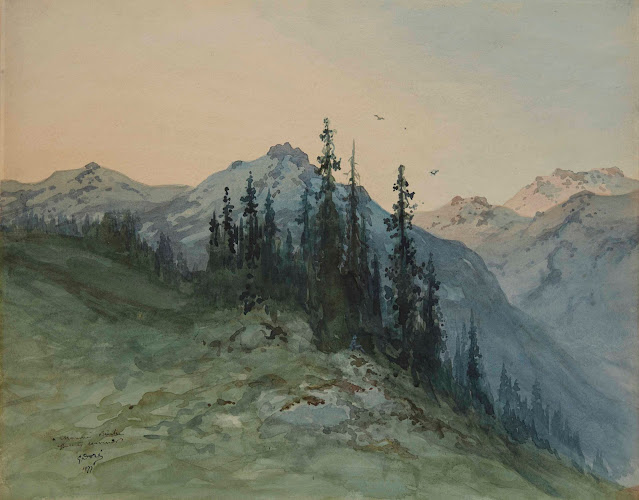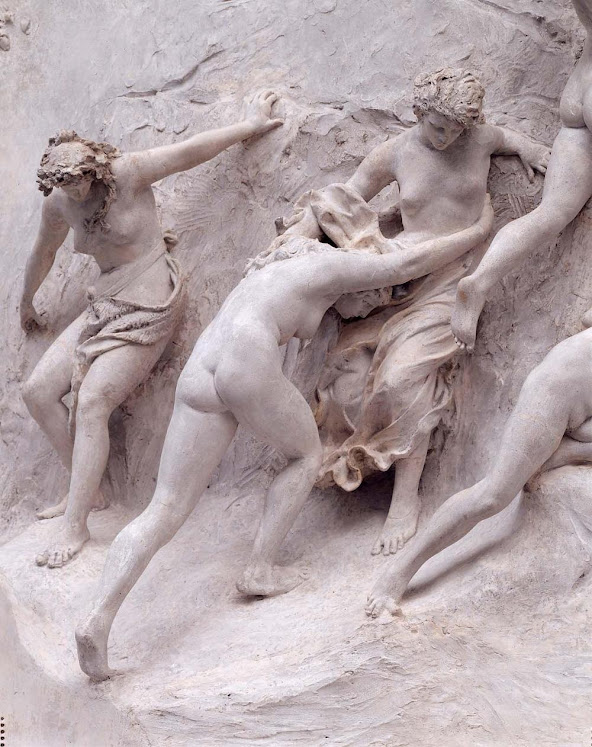Our visual image of Victorian London is largely fixated on its sordidness—cramped streets, dark alleys, desolate slums, overcrowding, and illicit dens. Two people are responsible for creating in our heads such pictures of destitution and filth—one is Charles Dickens, whose works largely revolved around grinding poverty, and the other is French illustrator Gustave Doré. Doré (1832 – 1883) was a prolific engraver, artist, illustrator, and sculptor, who became very popular both in France and England by being an extremely successful illustrator for books and magazine.
He began his career early—at the age of fifteen—working for the French paper Le journal pour rire. Before he was twenty-five, his illustrations had adorned the books of several prominent writers of his time such as Cervantes, Rabelais, Balzac, Milton, Byron, and Dante. His illustrations of Cervantes's Don Quixote left such an indelible impression on the collective imagination of the public that it forever changed how subsequent artists, stage and film directors would represent the various characters in the book in their medium. Doré's illustrations for the English Bible in 1866 was such great success that it earned him a major exhibition of his work in London, eventually leading to the foundation of his very own Dore Gallery.
In 1869, Dore teamed up with journalist Blanchard Jerrold to produce a comprehensive portrait of London. For the next four years, Jerrold and Dore explored the dark underbelly of the largest, most fashionable, and most prosperous city in the world, visiting night refuges, staying in cheap lodging houses and making rounds of the opium den. The duo were often accompanied by plain-clothes policemen. They travelled up and down the river and attended fashionable events at Lambeth Palace, the boat race and the Derby.
This is part 20 of a 25-part series on later works of Gustave Doré:
 |
| 1877 Fate and Love study for Sculpture pencil, pen and ink 25 x 19 cm Royal Collection Trust, UK |
 |
| 1877 Fate and Love bronze |
 |
| Fate and Love terracotta Musée de Brou, Bourg-en-Bresse, France |
 |
| 1877 Fir trees in an Alpine Landscape graphite and watercolour 37.6 x 48.2 cm |
 |
| 1877 Mountain Landscape oil on canvas 76.2 x 153.6 cm Joslyn Art Museum, Omaha, NE |
 |
| 1877 The Calling of Samuel brush and brown wash and white gouache, with pen and black ink, on tan wove paper 36.7 x 29.2 cm Art Institute of Chicago, IL |
 |
| 1878 Gorge in the Mountains oil on copperplate 109 x 169.5 cm The State Hermitage Museum, St. Petersburg |
 |
| 1878 Landscape with a Rider by a Pond oil on canvas 59.7 x 104.1 cm |
1877 Histoire des Croisades par Michaud (History of the Crusades by Michaud):
 |
| Title Page |
1879 Maenads in a Wood:
Known primarily for his book illustrations, prints, and paintings, Doré turned to sculpture late in his career. It was only in 1871 that he began to learn to model, and he exhibited his first sculpture at the Salon of 1877.
This plaster relief is the second version of a sculpture inspired by his 1879 painting of the Death of Orpheus. Dore used the same background and composition in both reliefs; however, here the dead Orpheus is absent and the female woodland figures are not armed. He has depicted a bacchic dance of the Maenads, followers of Dionysus, god of the Orphic religion, who in a delerious frenzy killed Orpheus. This relief may have been intended to serve as an architectural decoration.
%20x%20196.1%20cm%20(w)%20x%2025.1%20cm%20(d)%20Museum%20of%20Fine%20Arts,%20Boston,%20MA.jpg)
1879 Maenads in a Wood
plaster 120cm (h) x 196.1 cm (w) x 25.1 cm (d)
Museum of Fine Arts, Boston, MA






















































